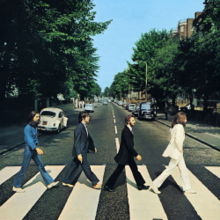
In the world of books, metafiction, a technique which recreate worlds conscious of themselves, any one will tell you, is not an easy topic to talk about to the average college freshman.
Yup--I mean who doesn't love Woody Allen right? Funny, neurotic and painfully stuck in a time of old world charm. So essentially I was forcing kids as old as my little sisters to watch a movie they parents watched, before they were even born!
There were difficulties at sourcing old Woody Allen movies--um..it wasn't in ACA video or even at the college library which was supposed to house ALL the great learning audio-visual materials in the WORLD (including classic Sociology staples like 70's social realist Pinoy flicks like 'Macho Dancer'! Even the English Department professors who I'm sure had their own personal stash of obscure art house flicks, asked me to share a downloaded copy if I got my hands on some.
Friend Kokoy, who was a fellow at the local workshop when I was Workshop Mommy, came through! And on his gig USB flashdrive, was a classic!
Woody Allen usually uses the technique of metafiction in bits and pieces in his movies, aside from the typical font of his end-credits. One example of this self-consciousness is when suddenly the character starts talking directly to the audience--breaking the bubble of the reel.
But since I really needed a more obvious use of the technique--settling then on "The Purple Rose of Cairo."
The 1985 movie (definitely BEFORE these kids were conceived!) has the priviledge of being one of the top 100 movies of all time in TIME magazine's list.
To name a list of cool things in this movie that show off the movie as an "art object" as a creation of a cast of thousands (stage hands, actors, director, camera crew, set designers, scriptwriters, etc.) to create a "reel reality":
1) Incidentally there are 2 movies entitled "The Purple Rose of Cairo," which audiences watch--a movie within a movie!
The first is a movie called "The Purple Rose of Cairo." Created by Woody Allen shot in 1985, that you pop into the DVD player in 2007.
The second is the movie within Allen's movie, also called "The Purple Rose of Cairo." Shot in black and white and set in the opulent 1920's Jazz Age, is the movie the characters are watching to escape the hardships of 1930's Depression America.
2) One person plays 2 different lead characters in this film. No twin roles here.
Jeff Daniels plays 2 characters--the actor playing a "Tom" in the Jazz Age movie and "Tom" itself. They actually interact and fight for the same woman...(What a love triangle, eh?)
3) Imagine if a character in the movie was watching someone in the audience (who is actually watching the movie) and suddenly came down from the screen!?
In Allen's movie, that happens!
"Tom" who plays an explorer in the Jazz Age movie actually steps down from the screen and into the movie theatre! He notices Cecille, a woman in a loveless marriage, as she regularly escapes her hard life by going to the movies. He falls in love and decides to leave his fellow castmates on the screen unable to finish the film!
As the two embarked on a forbidden romance, the "reel world" and the "real world" collides. To the point that the actor playing the character of "Tom" has to fly to New Jersey and persuade the character to get back into the film so that it can finish!
A title song that plays throughout the film is "Cheek to Cheek" by Irving Berlin, the famous big-budget Broadway musical. Sung by legendary tapdancing star Fred Astaire, the love song definitely paints a paradox of physical intimacy. I mean, what happens when "we dance cheek-to-cheek with a dream"?
So what's the take-away from this film (aside from the illustration of metafiction of course--can't help the giddy teacher in me)?
Without giving away the ending, the characters are painfully aware of whether they are on the "real" or the "reel" side of the fence.
The choice Cecille makes--between "Tom the perfect character, written that way" and the "Actor playing Tom"--shows us sometimes what gets us through life is knowing uncertainty was the most real thing there was we bravely faced and lived through.
And at the same time, this randomness makes us make things the way we wish they could be, in an attempt to hold on to something more.
And what is the difference between the things we make-up and make and the stuff in the world we have no control over, plan and shape as we wish (love, luck, the weather:)?
An unnamed character watching the movie gets upset when Tom gets down from the screen and the other characters can't play their scenes till the end of the film. She NEEDS for the film to NOT let her down.
Saying, "I want what happened in the movie last week to happen this week. Otherwise, what's life all about anyway?"

No comments:
Post a Comment